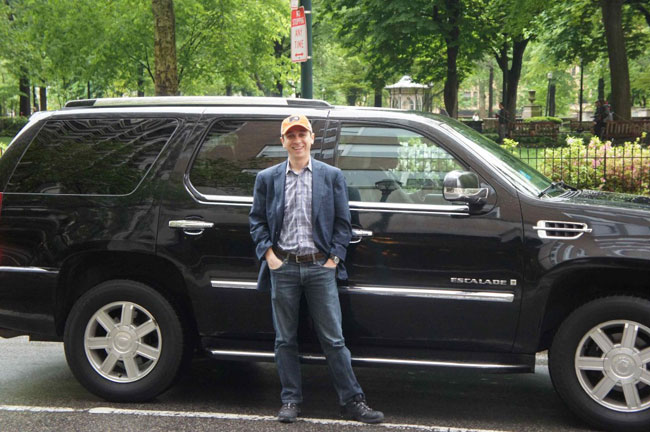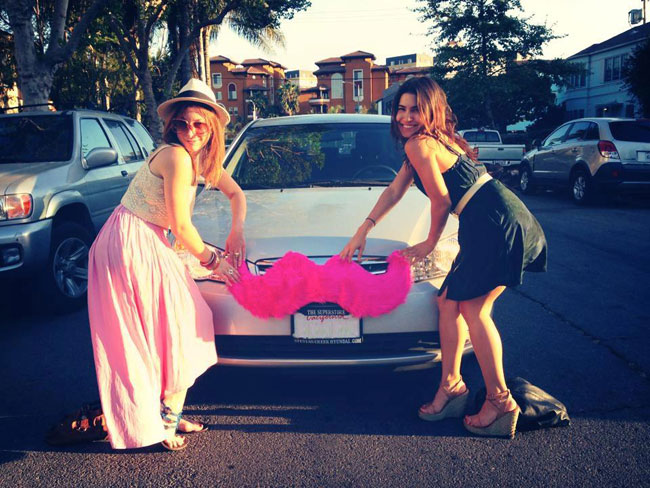On Oct. 18, one day after ridesharing service Lyft launched in Baltimore city with a public party at the Museum of Industry, attorney Todd Chason sent a letter to the executive secretary of the Maryland Public Service Commission on behalf of Yellow Cab of Baltimore.
“Lyft’s business model amounts to little more than hitchhiking for a fee, and should greatly concern the Commission,” read the first sentence of the letter’s final paragraph, just before Chason requested that the PSC order Lyft to “cease-and-desist operating in Maryland pending satisfaction of all regulatory requirements.”
The reasoning behind Yellow Cab’s claim is the same as it was when the company requested that the PSC block Uber from operating in Baltimore, a request the PSC denied. Lyft and Uber, Yellow’s argument goes, are not ridesharing companies using technology to facilitate a service, but are instead transportation companies, since they are trading rides for remuneration. This makes Lyft and Uber “unregulated taxicab service[s],” as Chason’s letter words it.
As ridesharing services have rapidly expanded to cities across the United States — Lyft is now in 16 cities and surpassed 1 million rides in August, nearly two years since launching — they’ve hit roadblocks set up by public service commissions, city councils and existing taxi companies.
The continual argument between the Disrupters and the Regulators is simultaneously a semantics game and a legal skirmish. Are Lyft, Uber and companies like them really ridesharing services if they help ferry passengers in exchange for cash?
And, if not, aren’t ridesharing startups just skirting cities’ car-for-hire regulations and siphoning customers from cabbies by providing illegal taxi services? That battle now appears to be playing out in Baltimore.
Although right now the fight isn’t with Lyft, or with Uber’s lower-cost alternative UberX, which launched in Baltimore in October.
Maryland’s Public Service Commission has been sparring with Uber’s traditional service, where black town cars and SUVs, summoned by taps on a smart phone, pick up and drop off passengers. In early August, the PSC issued a subpoena to Uber asking for a list of its drivers in Baltimore, which Uber tried to quash: an order published by the PSC on Sept. 25 reads, in part, that Uber insisted it wasn’t required to provide its list of drivers because it’s not a “public service company.” The PSC’s argument? Having that list will allow them to confirm that Uber uses “only Commission-licensed drivers and Commission-approved vehicles in Maryland.”
The case was in Baltimore City Circuit Court on Oct. 22 and was dismissed, as Baltimore City Paper reported, but Uber plans to appeal the ruling.
“The drivers with whom we have partnered are all commercially and professionally licensed and insured and approved by the state of Maryland. We make sure that that is all true,” said Nairi Hourdajian, a spokeswoman for Uber. “We validate the paperwork before we permit a driver to use our software platform. The state knows who these drivers are.”
As she said in a phone interview: “No other jurisdiction in the country has ever compelled the production of a list.”

Investor Josh Kopelman, whose First Round Capital invests in the company, standing with an Uber SUV in Philadelphia.
Unknown yet is whether the Maryland PSC will launch a similar inquiry into UberX — or act on Yellow Cab’s letter and investigate Lyft, although the PSC will consider the matter during its Nov. 13 administrative meeting.
However, Uber’s reluctance to produce a list of drivers, while self-preservationist, isn’t exactly intransigence. Uber’s traditional service enlists licensed livery drivers by partnering with existing limousine companies in a city and providing those drivers a phone and an improved dispatch service, courtesy of its technology platform.
For this, Uber takes a 20 percent cut from each ride, with the other 80 percent going to the driver. In this sense, Uber infringes on taxis’ turf not by operating an illegal cab service, but by expanding the pool of available cars and increasing competition.
“We think a more full ecosystem benefits everybody,” Hourdajian said. “And competition should be king here. That’s Uber’s perspective.”
That’s for UberBLACK, its traditional service.
But Lyft and UberX operate wholly outside of Maryland’s public utilities laws. Both, in a truer sense of the ridesharing definition, use unprofessional drivers not licensed by the PSC to transport passengers. They’re everyday drivers who are picking up passengers after being hailed remotely through their respective mobile apps. The thinking, as Lyft cofounder John Zimmer will tell you, is straightforward: if 80 percent of cars are usually unoccupied, why not try to find a way to increase the occupancy in every car, and use technology to bring together drivers with extra space and riders who have somewhere to go?
“We’re trying to improve transportation,” Zimmer, 29, said during an interview in October at the Emerging Technology Center’s Canton location days before it relocated. “We’re trying to make it more affordable, more accessible, more convenient — overall, better.”
Zimmer plays up the social side of Lyft, which launched in Baltimore on Oct. 17 with a fleet of about 50 “founding drivers,” he said. There’s a reason for the pink fuzzy mustaches affixed to the grilles of cars and the fist-bump greeting encouraged between driver and rider. All well and good, but no one is sharing rides through Lyft out of good will alone.
Riders, upon completing their journey, are presented with a “suggested donation” to pay their drivers, which comes to about 80 percent the cost of a taxi and is “based on time and distance and previously similar trips,” Zimmer said.

A rider could pay their Lyft driver nothing, but doing that enough times will get you flagged and booted from the system. Ultimately, in practice, these are not rides facilitated by an app where two people going to the same destination choose to hug Mother Nature by sharing a car to cut down on gasoline use. These are paid trips, given by drivers — engineering students, middle school teachers, artists — who have jobs and are making some income on the side.
UberX is the same model, peer-to-peer, but it also bills itself as “better, faster, cheaper than a taxi.” And its Facebook advertisements let potential drivers know that they can make as much as $60,000 per year hacking the Uber way.
It’s unsurprising that Yellow Cab of Baltimore has been the chief antagonist to Uber and Lyft. After all, it has an investment to protect, and cabbie unions are calling foul in other markets.
Of the 1,151 taxi permits for Baltimore city handed out by the Public Service Commission, Yellow Cab — which operates the city’s fleet of Checker Cabs and Yellow Cabs — owns 527 of them. Permits are distributed by the PSC for free to “associations and operators,” which then charge cab drivers a fee to transfer the permit. All Baltimore city cab drivers must have a permit to operate, and the cost of the permit fee, per year, is between $5,000 and $6,000, fairly steep for drivers whose average annual pay is between $18,000 and $23,000 a year.
But the Maryland PSC’s interest in taking a harder look at Uber and Lyft seems to reside in ensuring that each startup is providing adequate safety measures for both drivers and riders. (This is a point Yellow Cab’s letter brings up: “Lyft’s operation as an unregulated taxicab service raises several serious safety concerns.”)
Zimmer thinks the safety concerns around Lyft are unfounded.
- Lyft drivers must be 23 years or older and drive a vehicle that passes a safety inspection and is no older than a year 2000 model.
- They can have no DUI infractions in the last seven years, among other stipulations.
- All drivers undergo criminal background checks and DMV record checks, and the startup, buoyed by a hefty $75 million in venture capital, carries $1 million in excess liability insurance in addition to whatever insurance the drivers carry. Given that many municipalities nationwide see ridesharing startups as engaging in a commercial activity, personal auto insurance would not be enough coverage.
Hourdajian said that Uber drivers pass a screening process that entails a background check, a driving history check and an in-person interview. As for insurance: “Every ride that is arranged through the Uber app is insured, period,” she said. The company maintains a corporate insurance policy, $1 million per accident, that applies to all its UberX drivers as well.
By comparison, cabs licensed by the PSC operating in Baltimore city must carry, at a minimum, $75,000 of liability insurance for each accident, with an ascending tier from there based on several variables.
 Still, even if the safety measures taken by Uber and Lyft are satisfactory in the eyes of the PSC, the outcome will have only glanced the question about the fundamental nature of ridesharing startups. It’s the “underlying ideology,” as former TechCrunch writer Paul Carr put it, that propels startups like Uber forward: “that all government intervention is bad, that the free market is the only protection the public needs, and that if weaker people get trampled underfoot in the process, then, well, fuck ‘em.”
Still, even if the safety measures taken by Uber and Lyft are satisfactory in the eyes of the PSC, the outcome will have only glanced the question about the fundamental nature of ridesharing startups. It’s the “underlying ideology,” as former TechCrunch writer Paul Carr put it, that propels startups like Uber forward: “that all government intervention is bad, that the free market is the only protection the public needs, and that if weaker people get trampled underfoot in the process, then, well, fuck ‘em.”
Taxi drivers that have staged protests outside of city hall in San Francisco aren’t necessarily cheering for the downfall of ridesharing startups as they are clamoring for a modicum of forethought after years spent working in an industry where they’ve been downgraded to independent-contractor status, yet must continue paying big associations for the privilege of driving around a cab 60 hours a week only to make virtually no money.
Of course, from the perspective of Disrupters, that’s a problem for the Regulators to fix.
Until then, ridesharing in Baltimore will pick up the pace. Mahamane Arby, a 41-year-old who owns his own limo company, started driving for Uber two years ago and hasn’t looked back. A husband and soon-to-be father of two, he says he makes better money through Uber — or at least enough to pay monthly bills and expenses that fall between $3,000 and $8,500, a figure that includes the $1.5 million of commercial insurance he carries. Arby’s taxi-driving friends, he said, sometimes joke that the Uber drivers are “taking all our jobs.”
“But I always tell them, it’s an open market. You guys have to give good service so the customer can win,” said Arby. “And if you guys don’t make enough money in the taxi business, go buy your own car.”
Join the conversation!
Find news, events, jobs and people who share your interests on Technical.ly's open community Slack

Baltimore daily roundup: Mayoral candidates talk tech and biz; a guide to greentech vocabulary; a Dutch delegation's visit

Baltimore daily roundup: Medtech made in Baltimore; Sen. Sanders visits Morgan State; Humane Ai review debate

Baltimore daily roundup: An HBCU innovation champion's journey; Sen. Sanders visits Morgan State; Humane Ai review debate


